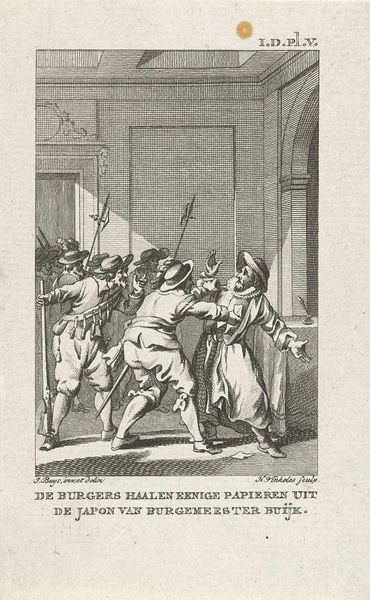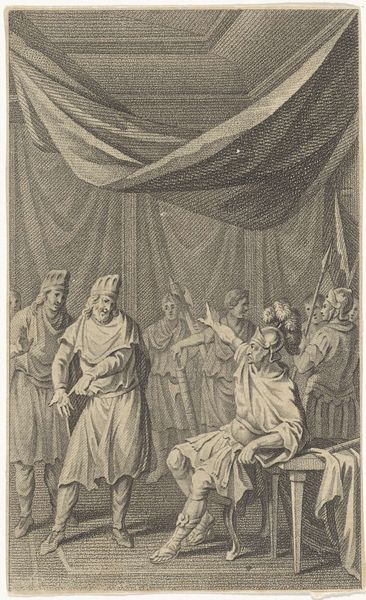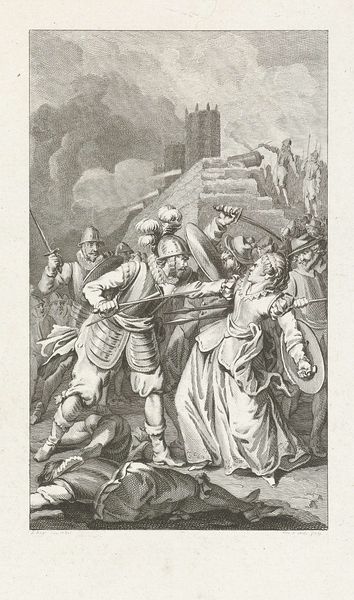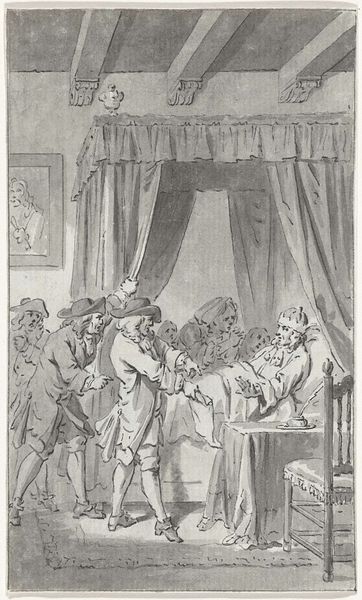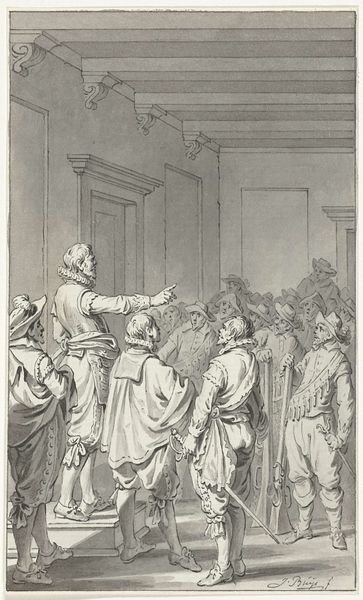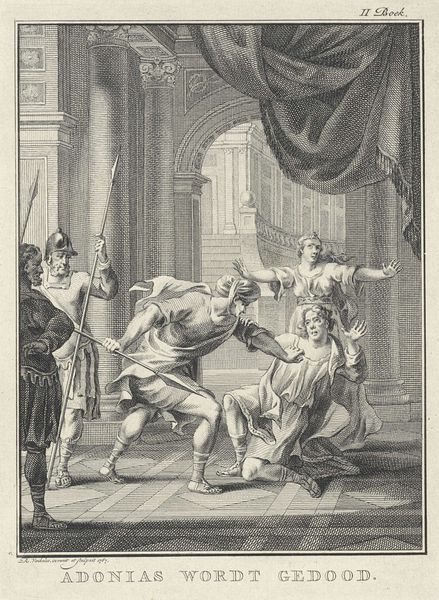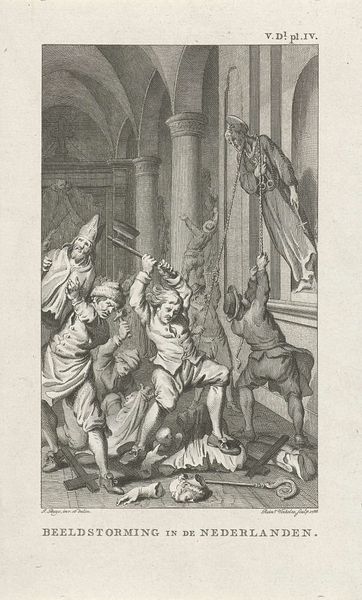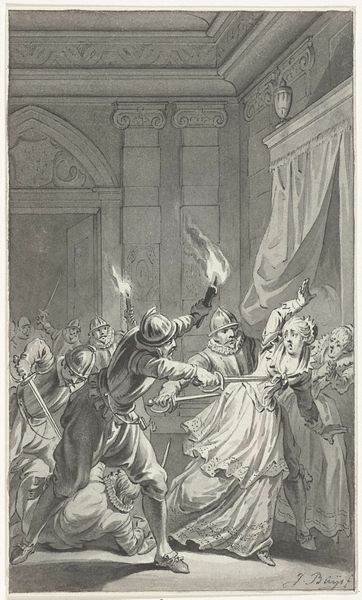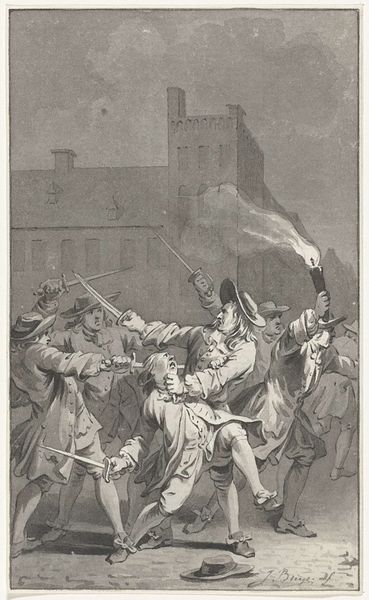
De arrestatie van Paulus Buis, pensionaris van Utrecht, 19 juli 1586 1785 - 1787
0:00
0:00
Dimensions: height 149 mm, width 89 mm
Copyright: Rijks Museum: Open Domain
Curator: Jacobus Buys created this drawing in pen and ink on paper between 1785 and 1787. It is called “The Arrest of Paulus Buis, Pensionary of Utrecht, July 19, 1586." Editor: Immediately, I’m struck by the strong contrast between light and shadow and its rather baroque theatricality for what is essentially an illustration. The space seems constricted, claustrophobic even. Curator: Yes, Buys effectively utilizes chiaroscuro to heighten the drama of this historical genre scene. Notice how the candlelight source sculpts the figures, directing our gaze from the intruding soldiers toward the startled figure of Buis in bed. Editor: And there’s so much happening in a relatively small space. Consider the visual language – the guards brandishing a halberd, the urgent gestures, even the quill pens lying on the bedside table – all point to disruption and a sudden violation. Curator: Precisely. Each element contributes to the overarching theme of disrupted authority and power dynamics. Look at the architectural features, particularly the bed and the imposing ceiling; the semiotic structure of this space communicates order threatened by this intrusion. Editor: Do you think Buys, through his strategic employment of these symbolic elements, alludes to the broader anxieties surrounding power in the Netherlands at that time? Curator: Undoubtably. While rendered nearly two centuries after the actual event, one cannot disregard the social and political tensions that may have reverberated during Buys's time, adding extra weight to this historical reflection. Editor: Seeing those upturned hands from the man in bed makes me wonder what he might represent on a more psychological level; in other words, are these universal human reactions that echo across historical contexts? Curator: Potentially. It is precisely this delicate balance between historical specificity and universally recognizable human emotions that gives it such powerful emotional appeal, prompting inquiry into deeper meaning. Editor: Indeed, it invites us to ponder not just the historical event, but also the timeless struggle between power and vulnerability. Curator: A fitting observation as we examine how formal compositions and historical contexts coalesce, enriching our interpretations of visual culture.
Comments
No comments
Be the first to comment and join the conversation on the ultimate creative platform.
